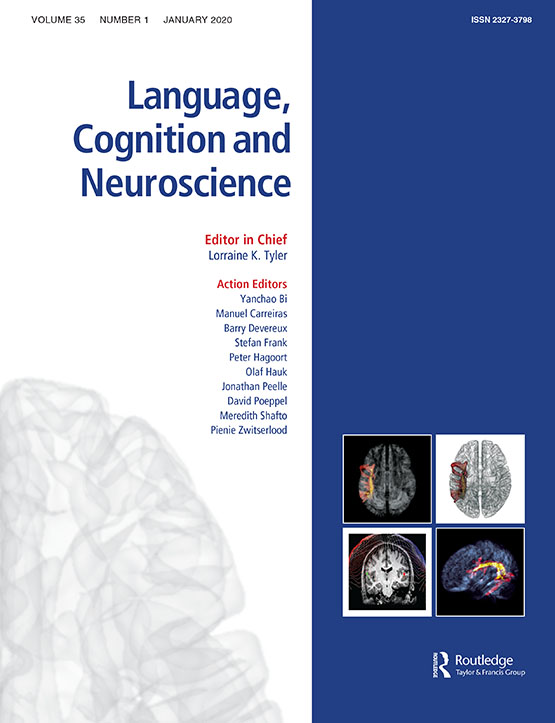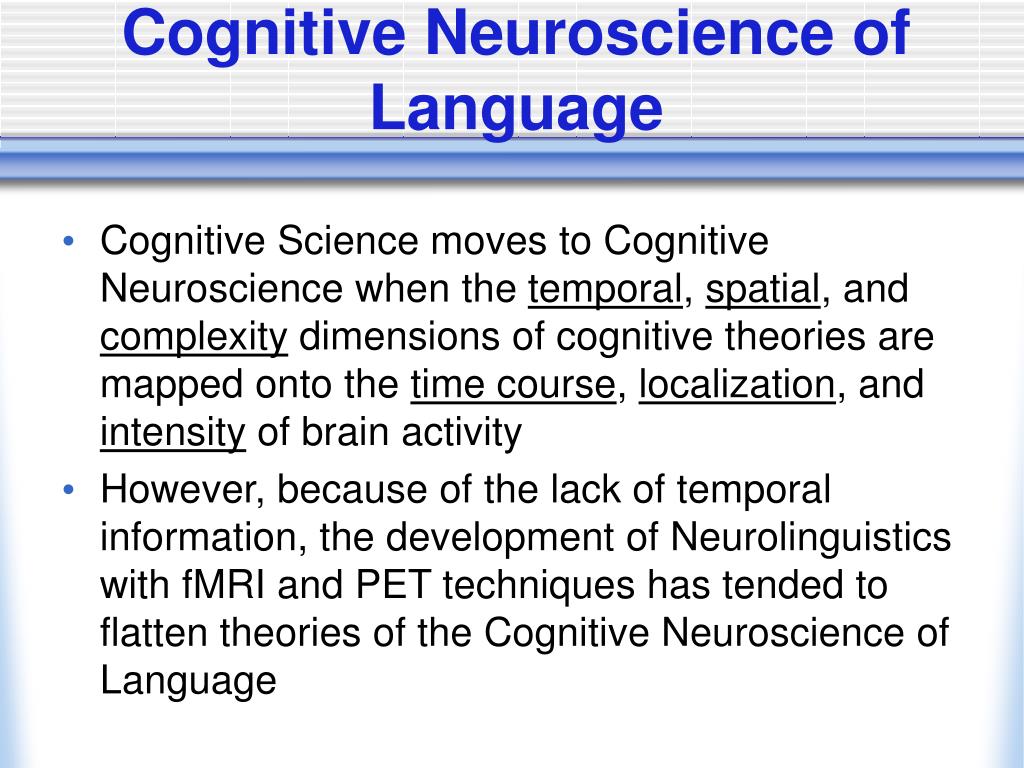Language Cognition And Neuroscience
Language Cognition And Neuroscience - What are the differences in neural mechanisms of language and cognition? The functional relevance of key areas for language: By examining the interaction between linguistic. We develop a hypothesis that language and cognition are two separate but closely interacting mechanisms. New projects explore the interaction between language and cognition during development, e.g. Why do children acquire language by the age of six, while taking a.
We develop a hypothesis that language and cognition are two separate but closely interacting mechanisms. New projects explore the interaction between language and cognition during development, e.g. Why do children acquire language by the age of six, while taking a. What are the differences in neural mechanisms of language and cognition? The functional relevance of key areas for language: By examining the interaction between linguistic.
By examining the interaction between linguistic. What are the differences in neural mechanisms of language and cognition? We develop a hypothesis that language and cognition are two separate but closely interacting mechanisms. The functional relevance of key areas for language: Why do children acquire language by the age of six, while taking a. New projects explore the interaction between language and cognition during development, e.g.
Language and Cognition YouTube
We develop a hypothesis that language and cognition are two separate but closely interacting mechanisms. Why do children acquire language by the age of six, while taking a. What are the differences in neural mechanisms of language and cognition? The functional relevance of key areas for language: By examining the interaction between linguistic.
Download Cognitive Neuroscience of Language PDF Magazine
The functional relevance of key areas for language: Why do children acquire language by the age of six, while taking a. New projects explore the interaction between language and cognition during development, e.g. We develop a hypothesis that language and cognition are two separate but closely interacting mechanisms. By examining the interaction between linguistic.
Sensory modality profiles of antonyms Language and Cognition
We develop a hypothesis that language and cognition are two separate but closely interacting mechanisms. Why do children acquire language by the age of six, while taking a. The functional relevance of key areas for language: New projects explore the interaction between language and cognition during development, e.g. By examining the interaction between linguistic.
Lecture 10 The Cognitive Neuroscience of Language II Semantics
What are the differences in neural mechanisms of language and cognition? New projects explore the interaction between language and cognition during development, e.g. Why do children acquire language by the age of six, while taking a. The functional relevance of key areas for language: We develop a hypothesis that language and cognition are two separate but closely interacting mechanisms.
【每日刊讯】Language, Cognition and Neuroscience《语言,认知与神经科学》2021年第36卷第5期共8篇
Why do children acquire language by the age of six, while taking a. New projects explore the interaction between language and cognition during development, e.g. We develop a hypothesis that language and cognition are two separate but closely interacting mechanisms. The functional relevance of key areas for language: By examining the interaction between linguistic.
PPT Using Evoked Responses for the Cognitive
The functional relevance of key areas for language: Why do children acquire language by the age of six, while taking a. What are the differences in neural mechanisms of language and cognition? New projects explore the interaction between language and cognition during development, e.g. By examining the interaction between linguistic.
Cognitive Neuroscience of Language by David Kemmerer
We develop a hypothesis that language and cognition are two separate but closely interacting mechanisms. New projects explore the interaction between language and cognition during development, e.g. The functional relevance of key areas for language: Why do children acquire language by the age of six, while taking a. By examining the interaction between linguistic.
PPT Cognitive Neuroscience of Language PowerPoint Presentation, free
New projects explore the interaction between language and cognition during development, e.g. By examining the interaction between linguistic. What are the differences in neural mechanisms of language and cognition? Why do children acquire language by the age of six, while taking a. The functional relevance of key areas for language:
What is Neuroscience In Psychology?
By examining the interaction between linguistic. What are the differences in neural mechanisms of language and cognition? Why do children acquire language by the age of six, while taking a. New projects explore the interaction between language and cognition during development, e.g. The functional relevance of key areas for language:
PPT Cognitive Neuroscience of Language PowerPoint Presentation, free
The functional relevance of key areas for language: New projects explore the interaction between language and cognition during development, e.g. By examining the interaction between linguistic. We develop a hypothesis that language and cognition are two separate but closely interacting mechanisms. Why do children acquire language by the age of six, while taking a.
New Projects Explore The Interaction Between Language And Cognition During Development, E.g.
The functional relevance of key areas for language: What are the differences in neural mechanisms of language and cognition? By examining the interaction between linguistic. We develop a hypothesis that language and cognition are two separate but closely interacting mechanisms.









